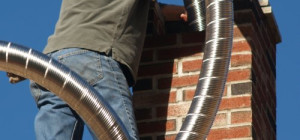 Building an electric guitar from scratch can be a rewarding and exciting experience for any guitar enthusiast. By hand-selecting the highest quality guitar parts and assembling them into a fully functional instrument, you can create a guitar that is perfectly tailored to your musical preferences and playing style. In this article, we will explore the steps involved in building an electric guitar from scratch, including selecting the best guitar parts, assembling the body and neck, and installing the guitar bridge, guitar tailpiece, and other essential components.
Building an electric guitar from scratch can be a rewarding and exciting experience for any guitar enthusiast. By hand-selecting the highest quality guitar parts and assembling them into a fully functional instrument, you can create a guitar that is perfectly tailored to your musical preferences and playing style. In this article, we will explore the steps involved in building an electric guitar from scratch, including selecting the best guitar parts, assembling the body and neck, and installing the guitar bridge, guitar tailpiece, and other essential components.
Choosing the best guitar parts is crucial to building a high-quality electric guitar. There are a wide variety of online guitar parts available, ranging from different types of wood for the guitar body and neck to various pickups, tuners, and other hardware components. By selecting the best guitar parts for your build, you can achieve your desired tone and playability, and create an instrument that is truly unique to your musical style.
One of the most critical guitar parts to consider when building an electric guitar is the bridge and tailpiece. These components play a crucial role in the guitar’s sound and playability, as they affect the string tension and overall tone of the instrument. By understanding the different types of bridges and tailpieces available and selecting the best options for your build, you can achieve the perfect balance of sustain, intonation, and tone.
Plan Your Build
The first step in building an electric guitar from scratch is to plan your build. This means choosing the type of guitar you want to build, selecting the best guitar parts, and making a list of all the tools and materials you’ll need. When choosing the type of guitar to build, consider your playing style and the types of music you enjoy playing.
Select the Best Guitar Parts
Choosing the best guitar parts is crucial to building a high-quality electric guitar. You can find a wide variety of online guitar parts, ranging from different types of wood for the guitar body and neck to various pickups, tuners, and other hardware components. When selecting your guitar parts, consider factors like the tonal characteristics of the wood, the type of pickups, and the type of bridge and tailpiece you want to use.
Assemble the Body
The first step in building your electric guitar is assembling the body. You’ll need to cut out the body shape from the wood you’ve selected and rout out the cavities for the electronics, pickups, and other components. Once the body is assembled, you can move on to the neck.
Assemble the Neck
The neck of your guitar will play a significant role in how the instrument feels and plays. You’ll need to select a piece of wood that is strong and stable enough to support the strings’ tension and cut it to the right size and shape. You’ll also need to install frets, which can be a challenging process for beginners.
Install the Bridge
The bridge is one of the most critical guitar parts, as it affects the string tension and overall tone of the instrument. You’ll need to select a bridge that matches the type of guitar you’re building, such as a tremolo bridge or a hardtail bridge. You’ll also need to install the bridge posts and adjust the bridge height and intonation.
Install the Tailpiece
The tailpiece works in conjunction with the bridge to affect the guitar’s tone and playability. You’ll need to select a tailpiece that matches the bridge you’ve chosen and install it onto the body of the guitar.
Install the Pickups
The pickups are responsible for capturing the vibrations of the guitar strings and converting them into an electrical signal that can be amplified. You’ll need to select the type of pickups you want to use, such as single-coil or humbucker pickups, and install them onto the body of the guitar.
Install the Electronics
The electronics of your guitar include the volume and tone controls, as well as the wiring that connects everything together. You’ll need to carefully solder the wiring to the pickups and controls and ensure that everything is properly grounded to eliminate any unwanted noise or hum.
Install the Tuners
The tuners are responsible for adjusting the tension of the strings and tuning the guitar to the desired pitch. You’ll need to select a set of tuners that match the type of guitar you’re building and install them onto the headstock.
Adjust the Nut and Frets
The nut and frets play a significant role in the guitar’s playability and intonation. You’ll need to adjust the height and spacing of the frets to ensure that each note rings true and in tune. You’ll also need to adjust the nut’s height and spacing to ensure that the strings are properly aligned and spaced.
Final setup and testing
Once all of the guitar parts are installed and adjusted, you’ll need to do a final setup and testing to ensure that everything is working correctly. You’ll need to adjust the string height and intonation, as well as check for any buzzing or unwanted noise. Finally, you can plug in your guitar and start playing!
Building an electric guitar from scratch can be a challenging yet rewarding experience for any guitar enthusiast. With the right tools, resources, and knowledge, anyone can create a beautiful instrument that suits their unique style and sound preferences. From selecting the required guitar parts to assembling and fine-tuning the finished product, building an electric guitar allows for complete customization and creativity.
By understanding the different guitar parts, such as the bridge and tailpiece, and their impact on tone and playability, builders can create a personalized instrument that meets their specific needs. Additionally, utilizing online resources for guitar parts and tutorials can save time and money while also providing access to a wider range of high-quality components and information.
Overall, building an electric guitar from scratch is a fulfilling and worthwhile experience that can deepen one’s appreciation and understanding of music and craftsmanship. Whether it’s for personal use or as a gift for a fellow musician, a handmade electric guitar is sure to impress and inspire. So, if you have the passion and patience for the process, don’t hesitate to start your own guitar building journey today.







